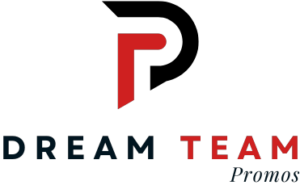The techniques, technologies, and instruments that control how users, gadgets, and software apps handle company data and IT systems are called identity management (IAM). IAM helps keep hackers out by verifying digital identities at login, ensuring authorized users have access to only what they need, and limiting the ability of those with higher privilege levels to do more.
Authentication
As individuals and businesses become more reliant on digital technology, the data they create and share becomes an increasing target for cyber attacks. To fend off these threats, organizations must clearly define who gets access to what. That is where identity and access management (IAM) comes in.
IAM is the framework of policies and technologies that ensures only the right users have access to technology resources. It falls under the larger umbrellas of IT security and data management.
To be successful, an organization’s IAM must perform three key functions: authentication, authorization, and access control. Authentication validates the user’s identity by confirming that they are who they say they are. Authorization determines what privileges, if any, the user is allowed to have. Access control determines how to manage those permissions across the entire network of applications, hardware, and other IT systems.
To reduce the risk of unauthorized access, an IAM solution should include multi-factor authentication (MFA) that requires more than one type of proof that the user is who they claim to be. This can be as simple as requiring a password and an e-mail address or as advanced as facial recognition or a physical token. In addition, IAM solutions that support single sign-on (SSO) enable the user to authenticate once and then have access to all the other resources in a given ecosystem without having to log on each time, reducing the need for multiple passwords and decreasing the chance of password fatigue or weak passwords.
Access Control
The identity access management market is growing due to cybersecurity incidents and strict compliance regulations. IAM solutions prevent hacks and fraud by verifying a user’s identity using their current device, IP address, and location before allowing access to sensitive applications and data.
IAM also helps businesses mitigate risk by enforcing strong authentication practices and providing visibility into user activity. Authentication protocols can include biometrics, tokens, or digital certificates and can be applied to various IT resources such as networks, servers, and software applications. IAM solutions also provide a single sign-on (SSO) feature that eliminates users needing to authenticate separately for each application. This reduces user friction and increases productivity by removing the need to remember multiple passwords.
Privileged access management is another important aspect of IAM that protects organizations from insider threats. It ensures that higher permission levels are only given to those who need them to do their jobs. Using privileged identity management techniques, IAM solutions verify a user’s identity by assessing attributes such as their current device, IP address, and location to determine if they need to access protected applications or data.
An effective IAM solution requires a broad range of stakeholders to collaborate across departments and disciplines to ensure it is secure and easy to use. By incorporating insights from business units like IT, HR, and security teams, IAM solutions can ensure that employees can meet their job functions while remaining protected against malicious attacks.
Access Lifecycle Management
With the rapid increase in mobile device usage, organizations need robust IAM solutions to ensure users’ credentials remain secure and that they do not fall prey to cyberattacks. These IAM solutions must also meet user expectations for ease of use and affordability to avoid frustrating them.
The increasing volume of user access requests from various sources—IT service desk, employee self-serve portals, IDM systems—creates new challenges for IT and security teams. IAM solutions automate and streamline these requests, which helps speed up the provisioning process. They also help reduce IT help desk costs and errors and support business agility and responsiveness.
IAM solutions implement the principle of least privilege, ensuring that users have only the level of access required to do their jobs. They use roles, groups, and policies to establish appropriate access to data and systems for employees, contractors, third parties, and hardware. IAM solutions also establish and follow strong record-keeping practices to track user account information, including the status of access privileges.
IAM is more important than ever with the advent of hybrid work models, hundreds of cloud applications, and a mix of personal and company-owned devices connecting to networks. IAM solutions need to be able to integrate across these different ecosystems. They need to incorporate insights from different business units, such as HR and IT teams, to provide a holistic approach to access management that enables peak employee productivity while reducing risks.
Privileged Access Management
Privileged access management, or PAM, is essential to IAM systems. It encompasses the tools, guidelines, and instruments that control how humans connect to apps and IT infrastructure. It also protects networks from unauthorized attackers.
It helps identify all human and non-human privileged accounts across the enterprise and ensures they are managed appropriately. This includes eliminating risky standing privileges and enabling just-in-time access through ephemeral accounts that only provide the necessary level of access for the current job. It also helps establish an identity framework with zero standing privileges. It is essential to implement true least privilege and avoid common pitfalls like rogue administrator accounts, overprivileged users, and privilege escalation attacks.
Privileged credentials and secrets exist everywhere in the digital world of cloud and hybrid environments, DevOps and robotic process automation, IoT devices, and machine-to-machine accounts. Cybercriminals target them because they often allow them to gain a foothold in a network, reach sensitive data and applications, and disrupt business.
The good news is that, with proper privileged access management in place, you can reduce your attack surface, minimize the impact of breaches and attacks, and build trust with customers, shareholders, and employees. This is because it demonstrates that you take the security of their personal information seriously and are doing everything possible to protect their privacy.













